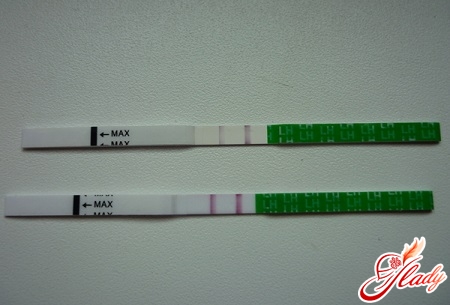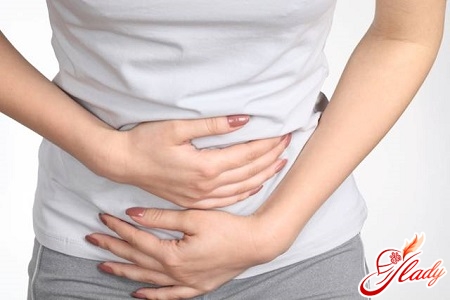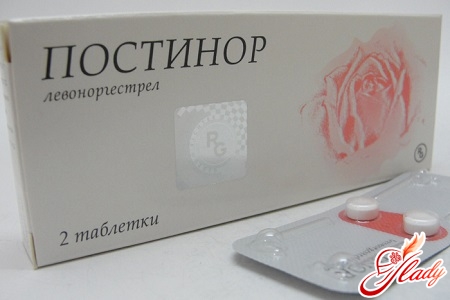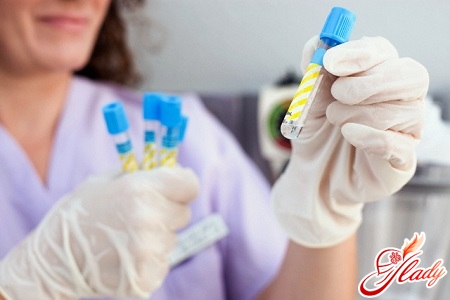
If you decide to have a child, and pregnancystill does not occur, the question arises of how to determine the ovulation period. An egg that has left the follicle lives for about one day (only in some cases up to 48-72 hours), so guessing the exact day of ovulation means getting as close as possible to your goal - successful conception. This can also be caused by sexual intercourse that took place three days before the egg is released or a day after. Sperm live in a favorable environment for about three days and are able to wait for an egg. For this reason and a number of others, knowledge of how to determine ovulation is more useful for those who want to have a child than for those who want to avoid it. Sometimes a woman can ovulate twice in one cycle or unexpectedly ovulate earlier or later than usual, so if you want to avoid pregnancy, you should not rely solely on the ovulation calendar. You can determine ovulation with the help of specialists (gynecologist or laboratory staff) or independently, without leaving home. There are many methods of determination, sometimes for greater reliability some of them are combined with each other.
Definition of sensations
Sometimes it is possible to understand about the approach or onsetovulation can be determined by internal sensations. The ovulatory period is always in the middle of the cycle. If the cycle is regular and lasts 28 days, the follicle most often ovulates on the 13th-14th day. If the cycle lasts 35 days, the egg will leave the follicle on the 17th-18th day. With irregular menstruation, it is problematic to predict the time of ovulation more or less accurately, but it always occurs approximately two weeks before the onset of menstruation. In most cases, if the cycle is regular, this indicates monthly ovulation. If menstruation occurs irregularly, with long delays, this may signal that ovulation does not always occur or is completely absent. Then you need to see a doctor. Usually, he prescribes an ultrasound, since this method gives a 100% guarantee of obtaining accurate results. A woman is quite capable of feeling the onset of ovulation, although the symptoms are very individual and vary in intensity. Each woman feels them differently. Often during ovulation, women experience discomfort or even pain in the ovaries. At the same time, vaginal discharge becomes more abundant and looks like a transparent, very thick, viscous film. Women often experience increased sexual desire to a greater or lesser extent during this period. It is believed that at this time they become most sexually attractive and the behavior of the men around them changes. Often after ovulation, a woman gains a little weight. However, all this is indirect evidence, and it is impossible to determine absolutely correctly whether ovulation occurred. Rather, all this can serve as a signal for a more reliable check.
What will the temperature tell?
You can determine the date of ovulation accurately and easily,by constructing a graphical test of the basal temperature (BT). On a notebook sheet in a box, draw two coordinate axes. The vertical axis is the temperature axis, starting from 36 ° C and ending with 38 ° C. The horizontal axis is the days of the cycle. On the first day of menstruation, begin to measure the temperature in the anus. Do this throughout the cycle. A regular mercury thermometer is more suitable for this purpose, since an electronic one is excessively sensitive to contact with the anus, and the slightest changes can distort the result. It is necessary to measure BT (i.e. the temperature of the rectum) in the morning, before getting out of bed. Before this, you should sleep for at least 6 hours uninterruptedly. If your sleep was interrupted, this will affect your temperature and, accordingly, distort the graph somewhat. If this happens on the day of ovulation or the day before, it may well complicate the understanding of the situation. Therefore, try to adhere to the sleep schedule and the time of measurements. However, if you were unable to do this, do not panic, just make notes on the chart about what and when could have affected the measurement results. If your sleep was disturbed, if you drank alcohol or took hormonal drugs the day before, if you caught a cold, make notes. Sexual intercourse also helps to increase BT, so it should be done no later than 4 hours before measurements. BT of the first phase of the cycle should be below 37°C. Usually, it fluctuates around 36.4-36.8°C. On the eve of ovulation, the temperature drops sharply by 0.4-0.6°C, the next day it rises to 37°C (or 0.5°C from the initial) and remains so or increases slightly until the beginning of the next period. If BT in the second phase of the cycle is slightly above 37°C, do not worry, this is acceptable. You should worry if the temperature fluctuations during both phases of the cycle are insignificant or the temperature does not change at all. This is possible either with an anovulatory cycle or with a complete absence of ovulation. If the situation does not change for several months, you should see a doctor. If the temperature in the second phase drops earlier than 10 days after ovulation, you should also make an appointment with a gynecologist and take tests for hormones. This may indicate a low progesterone content, which affects the ability to bear a child. Its deficiency leads to sad consequences. With an early decrease in BT, the likelihood of conception is low. To reliably judge whether you are ovulating, your basal temperature is measured for three months. Conclusions cannot be made based on one month. If your cycle is regular and ovulation occurs at the same time, you can make an ovulation calendar based on these readings. It notes the first and last days of the cycle, as well as the day of ovulation. Then the data is analyzed. If there are no deviations in either the number of days of the cycle or the days on which ovulation occurs, you can use this calendar in future when planning a pregnancy. However, if deviations occur even occasionally, you will have to determine the day of ovulation in other ways: by measuring BT, conducting home tests, ultrasound.
Home microscope
You can determine the day of ovulation by examiningsaliva under a microscope. It is sold in pharmacies. This device is small and compact, if necessary, it can even fit in a small bag. It costs an average of 2,000 rubles. However, its price may vary depending on the manufacturer, region and inflation. The microscope comes with instructions and drawings to help you understand what you see. Everyone knows that during ovulation, estrogen levels increase. Under the influence of this hormone, the amount of sodium and potassium in the mucus of the cervix, as well as in saliva, increases. When the mucus dries, potassium and sodium interact with mucin (the main component of mucus), they crystallize, and a peculiar pattern is formed, reminiscent of a spruce branch. After applying saliva to the glass and letting it dry, examine what you have obtained under a microscope. If only small pieces of needle-like twigs appear, this is a sign that the day of ovulation is approaching. When the branches are clear, large, well-formed - this means that ovulation will occur tomorrow. After ovulation, the "fir branch" disappears. If you examine saliva under a microscope long before ovulation and after it is over, you will not be able to find anything except scattered, chaotically located dots. The results can be distorted by various diseases of the throat or oral cavity, drinking alcoholic beverages the day before, smoking, eating, etc. Therefore, saliva analysis should be done in the morning on an empty stomach before brushing your teeth.
Pharmacy test strip
Another convenient home remedyuse is an ovulation test, which is sold in any pharmacy. It works similarly to a pregnancy test, only, unlike the latter, it measures not hCG, but the level of luteinizing hormone, which increases significantly a day or two before ovulation. It is better to determine ovulation using a test not in the morning, but in the afternoon, using more than one portion of urine. It is almost impossible to guess the exact day for the test, so it is carried out several days in a row. Checks begin 16 days before menstruation. If the cycle is 28 days, the test is done daily from the 11th day until the result is obtained, if 30 days - from the 13th day, if 35 days - from the 18th. There are some nuances in how to correctly conduct testing for women whose number of days in cycles varies. They are recommended to take a short cycle as a basis for calculations. This test is not suitable for women whose cycle is irregular or has too long a delay. Determining ovulation even in such situations using a test is possible, but it will be expensive, since you will have to conduct daily testing for a long time. Therefore, it is more advisable in this case to decide how to determine ovulation in a different way. If you have decided to do an ovulation test for the first time and have not used any other methods before, it is advisable to conduct the test in parallel with an ultrasound examination. In this case, there will be no need for daily testing. Wait until the follicle grows to 18-20 mm, only then do the test. This is usually done in cases where for some reason it is not possible to get to an ultrasound in the next day or two, and the follicle has already reached the required size.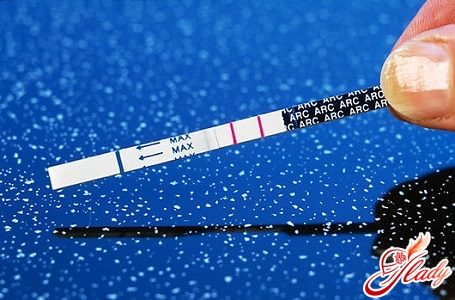
Ultrasonography
The most reliable and trustworthy wayovulation check is an ultrasound. With this examination method, you can track the development of the follicle and see the formation of the corpus luteum after the release of the egg. If ovulation has just occurred, you can see a gap formed in place of the follicle on the ultrasound monitor. Usually, the development of follicles is closely monitored during assisted pregnancy methods. When conception is planned in the usual way, it is enough to be examined on the 8-10th and 13-15th day of the cycle. With an irregular cycle, ultrasound examination begins on the 8-10th day and is carried out constantly with an interval of 1-2 days. Or they calculate the approximate date of maturation. It is known that the dominant follicle grows approximately 2 mm per day. Thus, having measured the follicle, you can predict when it will grow to 18 mm, and schedule a repeat ultrasound only for this day. The doctor will see whether the follicle developed well and whether ovulation occurred. This will help confirm the presence of ovulation in general or identify an anovulatory period. If ovulation is absent, the examination will have to be repeated in the next cycle. If it turns out that ovulation never occurs, pregnancy in a natural way in this situation is impossible. After a thorough examination, the doctor will either prescribe treatment or recommend resorting to in vitro fertilization, which involves drug stimulation of the ovaries. An ultrasound scan not only determines ovulation, but also simultaneously examines the condition of the endometrium in the uterine cavity. Too thick or too thin an endometrium can complicate the attachment of the embryo to the uterus or make it impossible. Therefore, by resorting to an ultrasound scan, you can solve both problems. Some women do not want to undergo an examination, fearing to get unfavorable results. However, it is better to know about the existing problem and actively seek ways to eliminate it, rather than hide from it. If home testing methods show no ovulation, undergo an ultrasound examination, as this method of examination is infallible.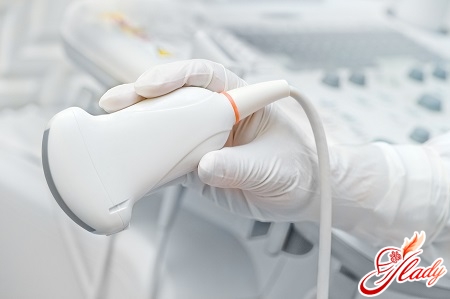
What is fraught with hormonal imbalance?
It is worth saying a little about level measurement.hormones. Despite the fact that this method is rarely used directly to determine the day of ovulation, it should not be neglected. By measuring the level of various hormones in the blood, it is determined whether ovulation occurs regularly, occasionally, or is completely absent. First of all, look at the level of LH and FSH. If it is elevated, this means that ovulation will occur in 28-36 hours. Increased progesterone levels may indicate that ovulation is either about to occur or has already occurred. Increased amounts of testosterone and DHEAS can cause infertility, so knowing its level in the blood is essential. Excessive levels of these male hormones also indicate that the cycle was anovulatory. Excessive formation of the mentioned hormones usually occurs with diseases such as polycystic ovary syndrome, adrenogenital syndrome, dysfunction of the adrenal glands or pituitary gland. A low level of the female hormone estrogen in the blood also indicates an anovulatory period. If you have just started thinking about having a baby, it is not at all necessary to immediately try to calculate the exact day of ovulation. With regular sexual activity, conception usually occurs quite quickly. The fact that you did not get pregnant on the first try does not mean that you have any problems. Knowing the exact date of ovulation is only necessary in case of long but unsuccessful attempts to conceive. This knowledge becomes very important in a situation where a man has problems and he needs several days of abstinence before sexual intercourse. At the same time, there is a chance of missing the most favorable day, which is when means of determining the day of ovulation come to the rescue. With severe stress, infectious diseases, sleep disorders and a change in sexual partner, ovulation can shift by several days. During such periods, checking is also not without meaning.





